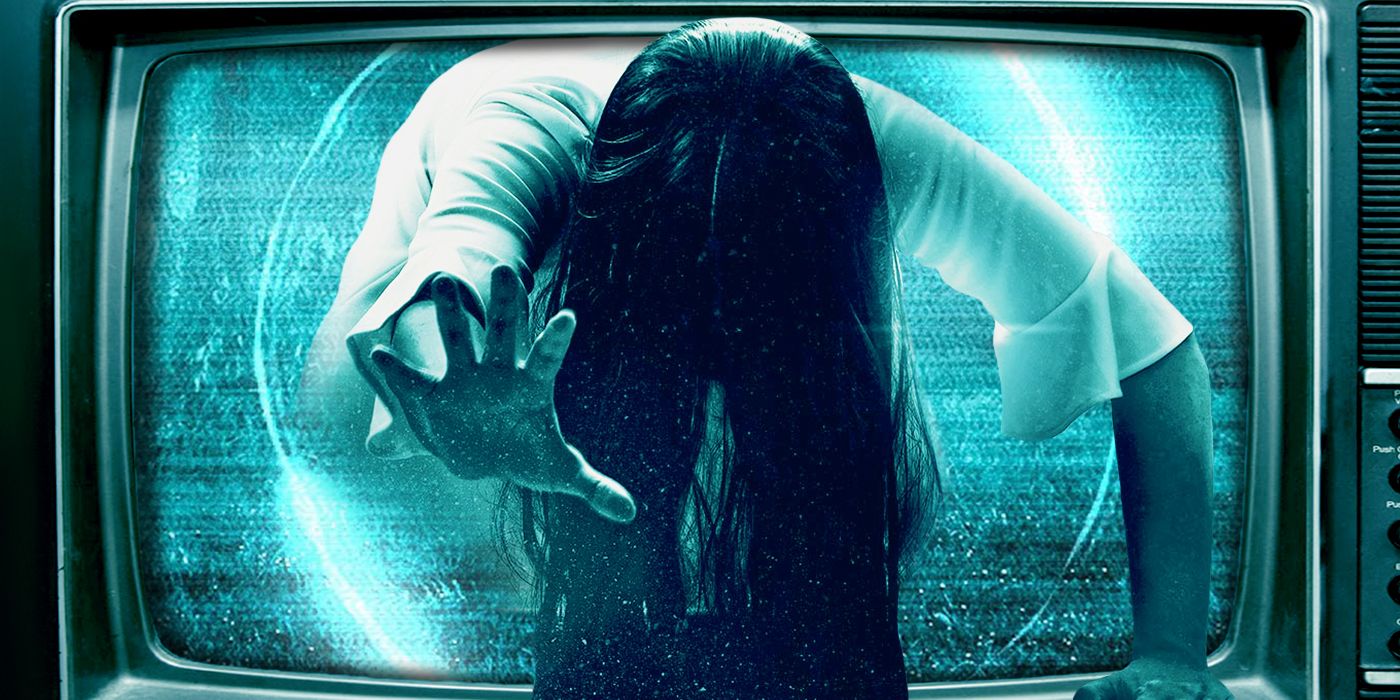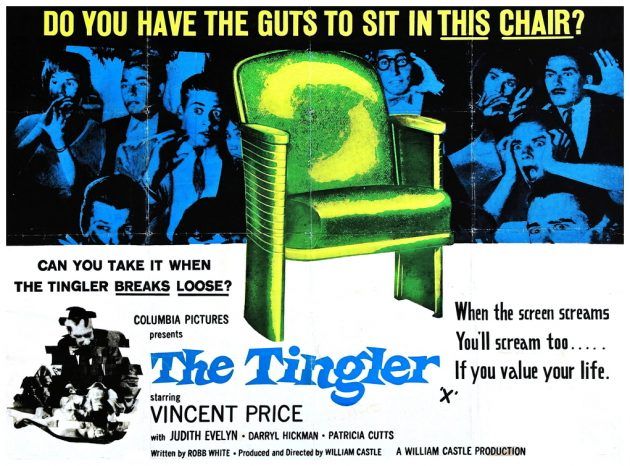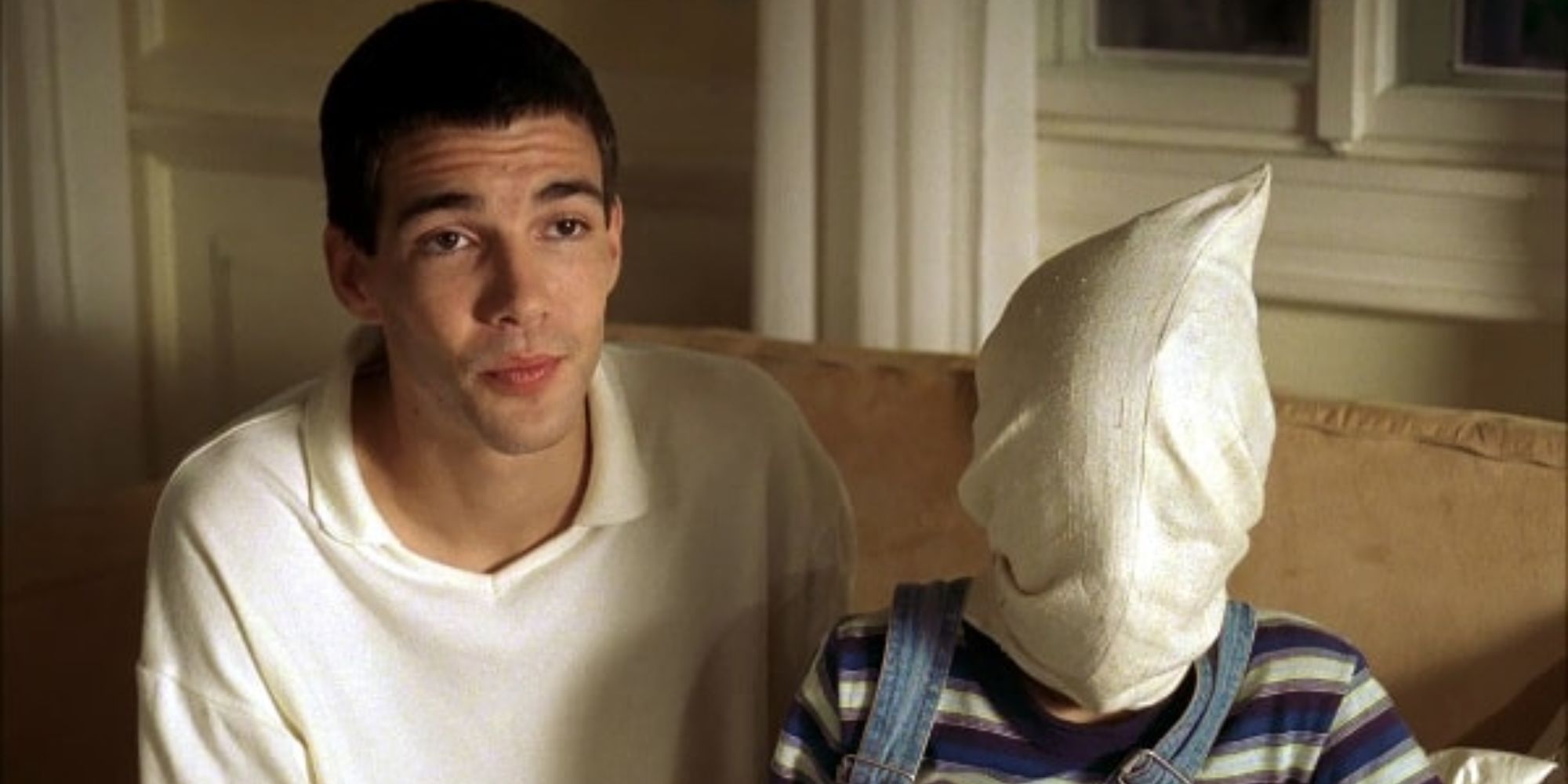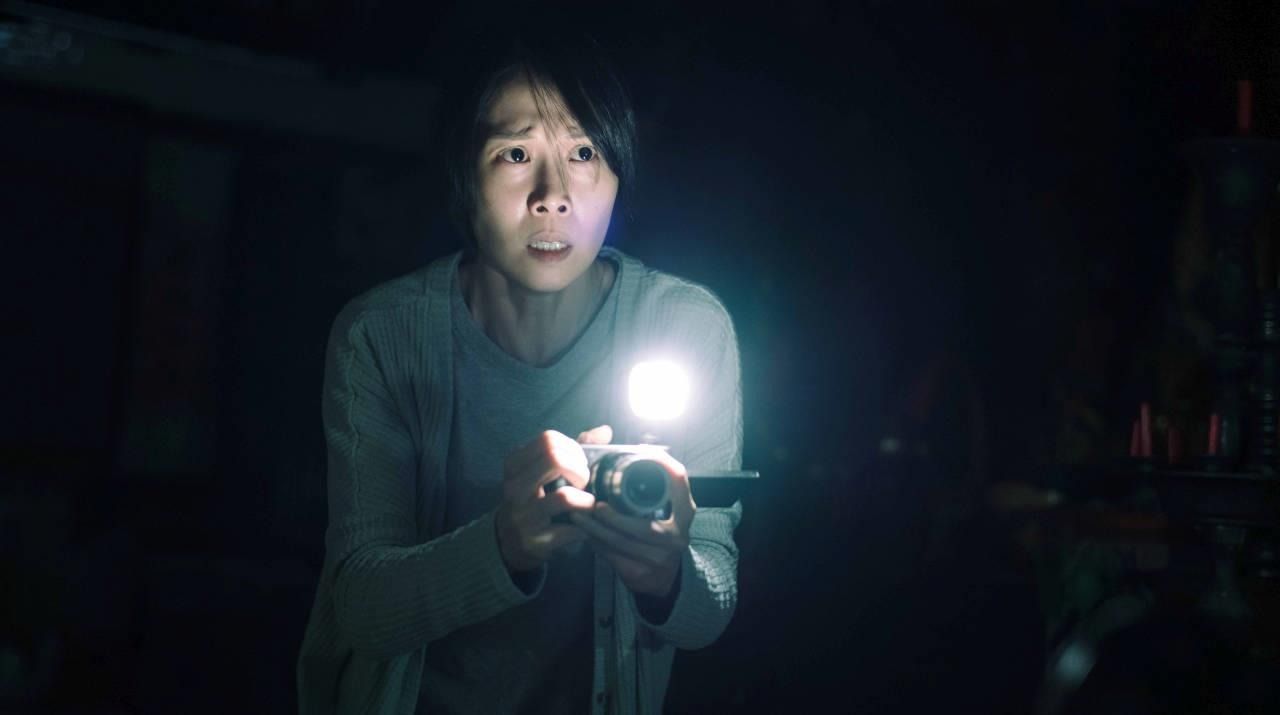In cinema, the fourth wall is the space that separates the action on screen from the audience. While the viewer is clearly aware that they are watching a film, the characters on screen remain blissfully unaware that they exist solely for our amusement. When it comes to horror, however, the fourth wall is the last thing standing between us and the carnage on screen. The moment it's broken, you are no longer safe. When horror films break the fourth wall, it most often takes the form of comedic relief or a final jump scare. Who could forget Freddy Kruger’s final cheeky wink in Freddy vs. Jason or Bagul’s dreaded acknowledgment of the audience at the end of Sinister? There is something both bone-chilling and exhilarating that arises from a film that acknowledges that you (yes, you) are watching everything unfold. In fact, horror has a long history regarding its investment in innovating the ways in which viewer experiences could be heightened by expanding the role of the audience both inside and even outside the theater.
Over the years, however, more and more horror films have taken fourth wall breaks to the next level by directly implicating audiences in the horrors taking place on the screen. There is less reliance on campy gimmicks and more emphasis on forcing audiences to truly confront the gravity of what they are watching. These films take an approach to horror in ways that haunt audiences well past the scrolling end credits. As audiences become more accustomed to what to expect from horror films, it may be time to look back on horror history and take notes from the various innovative techniques that have managed to breathe life into the theater and truly convince audiences that they are unsafe. In this way, fourth wall breaks are an effective horror tool as they have been shown to intensely heighten feelings of dread. Not only are the characters in the film at stake, but these fourth wall breaks create the illusion that the livelihood of the audience is at risk too.
Moving Towards Obliterating the Fourth Wall
Breaking the fourth wall in horror isn’t all tongue-in-cheek commentary on and responses to tropes, though. In the 1950s, director William Castle was extremely well known for his immersive movie theater gimmicks such as attempts to hypnotize the audience before showings of 1959’s Horrors of the Black Museum. In the same year, viewers of The Tingler would be informed that the monster was loose in the theater and were encouraged to scream to kill it. A couple of decades later, in 1980, found footage horror would begin to emerge with Ruggero Deodato’s Cannibal Holocaust convincing audiences that they were just shown a snuff film. Horror films would continue efforts to dissolve the illusion that audiences were safe in the comfort of their own seats. Following this tradition, films like 1999’s The Blair Witch Project and 2002’s American remake of Ringu, The Ring, used clever marketing tactics to encourage audiences to feel relatively unsafe while watching.
In addition to more physical fourth wall breaks that came a bit earlier, 1996’s Scream began the trend of implicating audience expectations of horror into the viewing experience by actively engaging with and commenting on decades-long established tropes. To a large extent, due to the incredible cultural impact of Scream, it soon became pretty difficult to imagine modern horror without some sort of meta-commentary. 2006’s Behind the Mask: The Rise of Leslie Vernon and 2011’s Cabin in the Woods masterfully built on the legacy of Scream’s meta-approach to horror, but audiences began to feel sort of jaded with the seemingly compulsory pressure for horror films to keep trying to outsmart their viewers. Efforts toward weakening or breaking the fourth wall slowly became less associated with genuine fear and more so aligned with parodies wrapped in horror imagery.
So, with all the efforts to continue reinvigorating the horror genre, how could we hope to keep the genre fresh and exciting without continuing to keep toddling on formulas that have once again become known to be a bit schlocky and gimmicky? The answer is two-fold and partly lies in Michael Haneke’s Austrian sleeper hit, 1997’s Funny Games. While Scream took the world by storm, a year later, Haneke’s film quietly swung the genre’s capabilities on a completely different axis. Prior to Funny Games, most fourth wall breaks served to appease audiences and make the experience more fun or exhilarating. It was rare for audiences to walk away feeling disgusted or uneasy with themselves. In other words, as time went on, audiences arguably felt even safer when viewing horror films that strove to bleed into our reality. Instead of concerning itself with the structural aspects of horror in a comedic or overtly satirical way, Funny Games’ take on the ethics of the violence shown in American slashers more closely aligned the viewer with the villains rather than the protagonists. Haneke’s approach to breaking the fourth wall showed that the technique has a lot more to offer than cheap tricks and attempts to subvert audience expectations. It can actually be really freakin’ scary.
Reinvigorating and Reimagining Fourth Wall Breaks
The magic of Funny Games lay in the ways in which the murderous antagonists would look back and wink at the audience as they terrorized the Schober family. At one point a member of the family, Anna (Susanne Lothar), manages to shoot and kill one of them, but the other finds a remote control in the home and proceeds to rewind the events of the film to prevent his accomplices' death. In this way, the breaking of the fourth wall serves to further increase the discomfort of audiences rather than encourage their participation in a fun way. In the end, the killers approach another family and give one final wink to the audience as if to say “this is going to happen again, and you can’t stop us.” Funny Games’ utilization of the fourth wall break was revolutionary in the ways it not only made audiences feel complicit but helpless.
The other inspiration horror films should take when conceptualizing new ways to break the fourth wall is their cousin, the video game. In a lot of ways, horror games have been using fourth-wall breaks for years in order to heighten the tension one feels when playing. Some games start messing with your computer files, while others run off the premise that they are directly interacting with the player. A lot of the best horror games rely on convincing players to believe that the events of the game have consequences outside of it. Think old-school chain letters that would convince you that you’ll be dragged to Hell by a mysterious killer clown if you don’t forward its message to at least 15 people. Tools like optical illusions and software that track the player’s movements really serve to immerse each player into the game’s reality. Recently, some of the most innovative horror films have taken notes from the most effective scares that have been traditionally only utilized by games.
Films like 2018’s Antrum: The Deadliest Film Ever Made and 2022’s Incantation have begun to usher in a new immersive era in horror by taking cues found in Funny Games and popular horror games. The fun is gone and is replaced with pure unadulterated terror. Instead of solely relying on meta-commentary, marketing, or theater gimmicks, they slowly establish rich lore that works to make audiences viscerally aware that there is just the slightest chance the films may actually carry the ability to hurt them. Breaking the fourth wall doesn’t have to be in your face to be extremely effective. It can be slow, haunting, and threatening. Incantation directly asks its audience to chant along with the protagonist (chant along at your own risk) and Antrum allows its audience to watch the cursed film in question before it goes on to explain how its subliminal imagery can actually negatively impact viewers.
While the last couple of decades has made breaking the fourth wall seem a bit cheesy and overdone, there is still undoubtedly a lot of untapped potential regarding its viability in making watching horror an even more profound experience. When we begin thinking about breaking the fourth wall as a tool better used with subtle effectiveness, a whole world of dread opens up. Instead of allowing ourselves to get jaded when thinking of ways horror can up the ante, sometimes it's best to keep in mind the ways horror has always managed to figure out new and exciting ways to scare the pants off of audiences. Be careful, however, to not actually get cursed or killed along the way.




